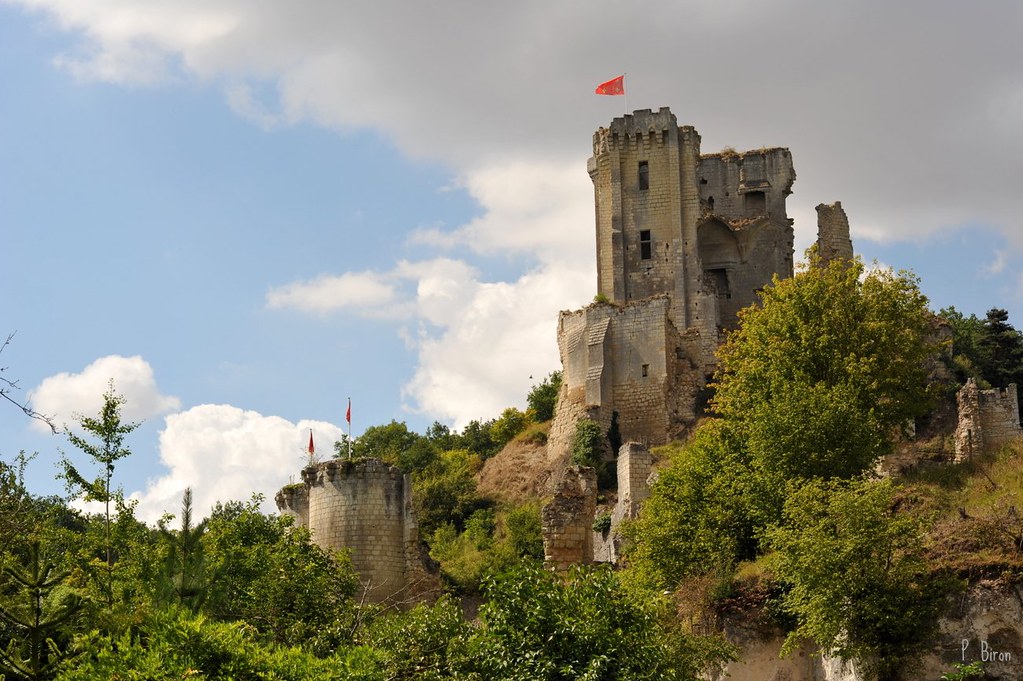#Plantagenêt
Text
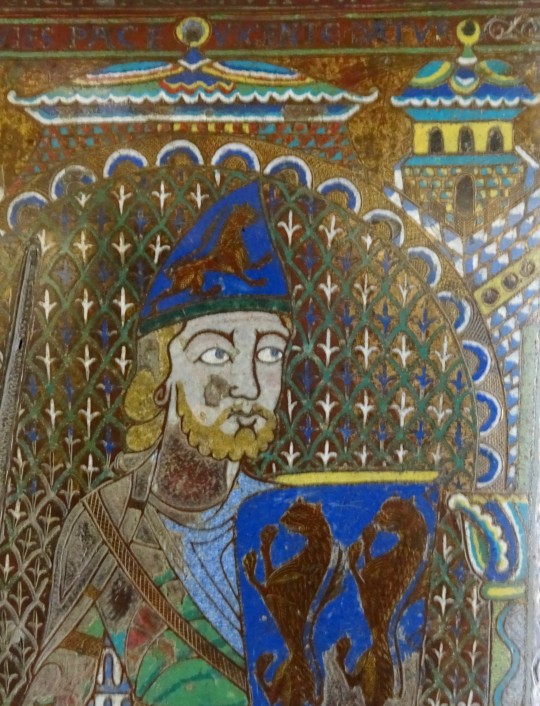

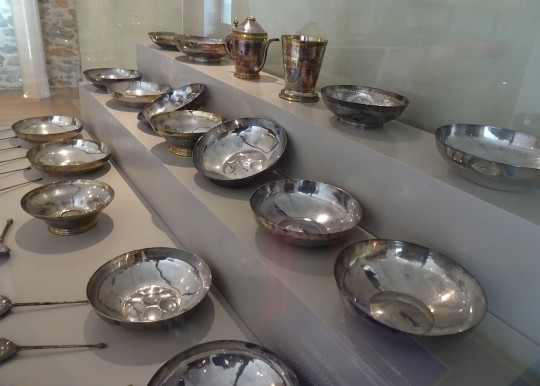


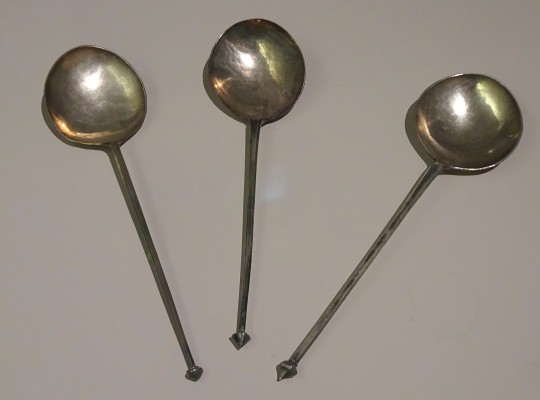

Quatrième et ultime étape de mon périple dans l'Ouest pour retrouver des ami(e)s lointain(e)s il y a un bon mois déjà : ma sœur Dominique et son mari, à Alençon, aux confins de la Normandie et des Pays de Loire.
On passe une journée au Mans. Visite du Carré Plantagenêt, musée d'histoire de la ville.
Geoffroy Plantagenêt, cuivre émaillé - Le Mans, 1150
les 3 suivantes : trésor "de Coëffort", gobelet, récipient verseur, coupes, cuillères, etc., en argent - Le Mans, XIVème s.
applique médiévale en bronze - XII-XIVème s.
cuillères en argent - mi-XIVème s.
voir 1
#le mans#carré plantagenêt#archéologie#médiéval#moyen-âge#plantagenêt#émail#geoffroy plantagenêt#coëffort#trésor#trésor de coëffort#argent#cuiller#cuillère#bronze
4 notes
·
View notes
Photo

28 mai 1258 : signature du traité de Paris entre les rois de France et d’Angleterre ➽ http://bit.ly/Traite-LouisIX-HenriIII Faisant de Henri III d’Angleterre le vassal de Louis IX, ce traité marque également la rétrocession par le roi de France aux Anglais de la suzeraineté sur le Limousin, le Périgord, la Guyenne, le Quercy, l’Agenais et la Saintonge, et met un terme au conflit centenaire entre Capétiens et Plantagenêts
#CeJourLà#28Mai#Traité#Paris#Roi#LouisIX#France#HenriIII#Angleterre#Vassal#Suzerain#Provinces#Capétiens#Plantagenêt#Politique#histoire#france#history#passé#past#français#french#news#événement#newsfromthepast
12 notes
·
View notes
Text
Capétiens vs Plantagenêts: a matter of suzerainty.
It was also his position as suzerain which gave Louis VII the chance of interfering in and inflaming the quarrels which raged in the Angevin family. This was an effective means of weakening his great antagonist. Henry II and Eleanor produced a large family, and reared four of their sons to the age at which custom demanded that they should be provided for. Their eldest son Henry was granted Normandy in October 1160 and was associated with his father on the throne of England in 1170. Richard was given Aquitaine in 1169 and Geoffrey Brittany in 1175. John, the youngest child of Henry and Eleanor, was not old enough to be entrusted with any estates until the very last years of his father's reign, and by the time he came of age all the available lands had been given away. As Duke of Normandy, Duke of Aquitaine, Count of Poitiers, the sons of Henry II came to perform homage to the King of France and became his men. It was in vain that Henry II sought to utilise the Norman procedure of pariage to maintain the unity of his continental territories in favour of his eldest son, the "Young King" Henry. (Under pariage the eldest son succeeded to all the heritable property and was alone answerable for it to the suzerain; each of his brothers received a share, but held it of him). This device could not be put into full operation in Aquitaine, which was not part of Henry's heritage but Eleanor's. And when she granted it to Richard, he owed homage not to his father or his eldest brother, but to the King of France. The Young King Henry had done homage as Duke of Normandy to Louis VII in October 1160. When he repeated his homage in 1170 it was made to embrace Anjou, Maine, and Brittany as well. At the same time Richard did homage to Louis for Aquitaine.
It is true that in 1174 Henry II compelled his sons to perform homage to him after their rebellion, but this new homage did not necessarily annul their homages to the King of France. Henry II himself had done homage to Louis VII in 1151 and again in 1169, and was to perform it yet again to Louis's successor, Philip Augustus, in 1180. Thus throughout the conflict between Louis VII and Henry II the French king's suzerainty was affirmed and recognised. This did not save Louis from defeats at his vassal's hands. Nevertheless, to judge from the Toulouse affair in 1159, Louis' suzerainty occasionally cramped Henry's style, and put him in the wrong in the eyes of contemporaries, including the barons of his continental fiefs. To play the rebel vassal was hardly prudent for a king when many of his own vassals were rebelliously inclined. It was not that the idea of rebellion itself shocked feudal society. On the contrary, it was one of the legitimate courses open to a vassal needing to safeguard his rights against the encroachments of his suzerain. But in the disputes between Louis VII and Henry II, Henry was the law-breaker as well as the vassal in revolt. For his rebelliousness against an impeccable suzerain there could be no justification.
It may be objected that Louis VII was constantly intriguing with Eleanor of Aquitaine and with Henry II's sons. But after all Eleanor, as Duchess of Aquitaine, was herself a royal vassal. Two of Henry's sons had done homage to Louis. Another, Geoffrey, by dint of his father's vassalage, was the French king's rear-vassal. And the king had, as suzerain, not merely the right but the duty to concern himself with the welfare and harmony of his great vassal's family, to ensure that a proper settlement was made on the sons. It would be unfair to accuse Louis of hypocrisy; nor did Henry ever complain that the French king was making trouble in his family. Louis' own grievances against Henry were many and varied, and Henry never made a serious effort to deny their validity.
Thus from 1154 to 1180 Henry II had the appearance of a vassal engaged in unjustifiable revolt against his suzerain. This line of conduct undermined his own position. It constantly reminded the baronage of the Angevin fiefs that the King of France was Henry's suzerain- if only because his suzerainty was so often invoked. And it helped to prevent the fusion of the individual elements of the Angevin empire on the continent. Provincial separation, already too strong for Angevin rule to subdue, was reinforced.
Robert Fawtier- The Capetian Kings of France
#xii#robert fawtier#the capetian kings of france#louis vii#henry ii of england#aliénor d'aquitaine#henry the young king#richard the lionheart#geoffrey plantagenêt#john lackland#jean sans terre
7 notes
·
View notes
Photo



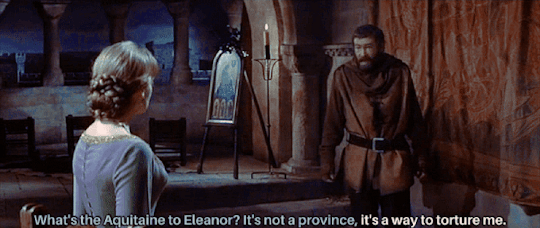


All in all, a radical incompatibility exists between the modern conception of royalty and the patrimonial perception of power, between the public dimension of the State in gestation and the private side of the princely dynasty, paradoxically too united and anxious to preserve at all costs cadet rights. The archaism of the system remains no less heavy. While the peripheral aristocratic revolts of the "Plantagenet Sphere" stoke the domestic quarrels of the royal family, the court does not appear as an epicenter whose palace intrigues would end, like concentric waves, at the provincial margins where they would then disintegrate. On the contrary, it is the pressure from the periphery that destroys the unity of the center. The sons of the king defend the interests of the nobility of the principalities they govern. The influence of those around them is too heavy. The mesnies (in the sense of household or military entourage of a lord) of the princes are a disturbing element to the detriment of the father’s court.
-Martin Aurell, L’Empire des Plantagenêt 1154-1224
80 notes
·
View notes
Text
#booklr#books#alienor of aquitaine#eleanor of aquitaine#henry ii#Henry III#Edward I#Edward II#Edward III#John#the black prince#edward iv#Richard II#richard iii
2 notes
·
View notes
Text
Aliénor d'Aquitaine et les Plantagenêts, le temps des crépuscules : épisode • 4/4 du podcast Aliénor d'Aquitaine, une reine pour deux royaumes
1 note
·
View note
Video
Ruines du Château de Lavardin - Loir-et-Cher par Philippe_28
Via Flickr :
Le château de Lavardin se situe sur un promontoire rocheux qui domine la vallée du Loir. Salomon Ier fut au XIe S. le premier seigneur de Lavardin. Au XIIe S., il devint la propriété des comtes de Vendôme et fut assiégé en vain en 1188 par Henri II Plantagenêt et son fils Richard-Coeur-de-Lion. En 1447 Charles VII et Agnès Sorel séjournèrent à Lavardin. En 1589, les troupes de la Ligue s'en emparèrent mais se rendirent l'année suivante aux troupes d'Henri IV commandées par le Prince de Conti. Henri IV ordonna son démantèlement par la suite.
0 notes
Text







Quatrième et ultime étape de mon périple dans l'Ouest pour retrouver des ami(e)s lointain(e)s il y a un bon mois déjà : ma sœur Dominique et son mari, à Alençon, aux confins de la Normandie et des Pays de Loire.
On passe une journée au Mans. Visite du Carré Plantagenêt, musée d'histoire de la ville.
épée viking, avec l' inscription "ingelrii" (sans doute le nom de l'atelier, à Cologne) - Rennes, Xème s.
corne à boire en verre - Le Mans, IV-Vème s.
Fac simile d'une statuette d'homme en or - Le Mans, Vème s.
maquette des murailles gallo-romaines du Mans
boucle de ceinture mérovingienne en bronze
pions de tric-trac en os et bois de cerf - Sarthe, X-XIIème s.
voir 2
#le mans#archéologie#carré plantagenêt#gallo-romain#médiéval#haut moyen-âge#mérovingien#viking#ingelrii#épée#cologne#köln#corne à boire#verre romain#or#maquette#muraille#boucle de ceinture#tric-trac
22 notes
·
View notes
Photo

28 mai 1258 : signature du traité de Paris entre les rois de France et d’Angleterre ➽ https://bit.ly/2Lsbspg Faisant de Henri III d’Angleterre le vassal de Louis IX, ce traité marque également la rétrocession par le roi de France aux Anglais de la suzeraineté sur le Limousin, le Périgord, la Guyenne, le Quercy, l’Agenais et la Saintonge, et met un terme au conflit centenaire entre Capétiens et Plantagenêts
#CeJourLà#28Mai#Traité#Paris#Roi#LouisIX#France#HenriIII#Angleterre#Vassal#Suzerain#Provinces#Capétiens#Plantagenêt#Politique#histoire#france#history#passé#past#français#french#news#événement#newsfromthepast
8 notes
·
View notes
Text
Marie de France
For six years, from March 1181 to May 1187, Marie exercised the comital office as regent for her son Henry (II). She did so vigorously and alone, without restriction by a regency council. In the great hall of her palace in Troyes, which served as the political and administrative center of the county, as well as in her other castle towns, Marie sat with a small council of barons and administrative officers to discharge all the routine business of medieval rulers: receiving petitioners, arbitrating and settling disputes, making benefactions to churches, confirming private transactions, receiving homages, confiscating fiefs and granting new ones. Since her acts continued to be drawn up by the same chancery officials who had served her husband, they remained the same in form and content. With the notable exception of appointing a new marshal, Geoffroy of Villehardouin, in 1185, she made no discernible changes in her husband's officers or policies. Although feudal tenure by women apparently increased precisely during her rule, we cannot say whether she fostered that practice. Her court, however, was perceived as being receptive to women, several of whom sought her confirmations at critical junctures in their lives.

In 1181 Marie found herself widowed with four young children — Henry II was fifteen, Marie seven, Scholastique five or six, and Thibaut III only two. She considered marrying the recently widowed Philip, count of Flanders (1168-91), the son of her husband's old friend and crusade companion count Thierry. Philip and Marie were about the same age and well acquainted: a decade earlier he had sponsored the betrothal of her two oldest children, Henry II and young Marie, to the children of his sister Margaret, countess of Hainaut. Philip went so far as to seek a papal dispensation for his marriage to Marie, since they were indirectly related, but then, for unknown reasons, broke off negotiations. Marie, at thirty-nine, seems not to have sought another marriage. Thereafter she was preoccupied with completing the marriages between her children and the children of Margaret and count Baldwin V, who had renewed, broken, revised, then delayed carrying out the marriage contract between his only son and Marie's daughter. Countess Marie called on her in-laws to force the elusive count to deliver the groom; Gislebert of Mons describes the scene at Sens where the countess, the archbishop of Reims, the counts of Blois and Sancerre, and the duke of Burgundy cornered Baldwin, perhaps threatening him, if he did not follow through with the marriage, which finally did take place (January 1186). Marie then trumped Baldwin at his own game by ignoring the second part of the contract and arranging her own son's marriage to the infant heiress of Namur instead of to Baldwin's daughter.
When Henry II (1187-90) assumed the countship, Marie retired to Meaux, probably with her youngest son Thibaut, then eight. The forty-twoyear-old countess could not have imagined that she would ever rule again. But the fall of Jerusalem to Saladin on October 2, 1187 electrified France, and young Henry II was swept up by the wave of enthusiasm for a new crusade to recover the holy city. In May 1190 the unmarried count departed with a large contingent of barons and knights on the Third Crusade, leaving his mother as regent once again. Marie ruled in his absence (he died overseas in September 1197), then continued to rule until her death in March 1198 at fifty-three. In all, she had ruled the county over fifteen years — in her husband's absence, as guardian for her oldest son and then in his absence, and finally in the last months of her life as guardian for her second son, Thibaut.
Although she was countess of Champagne for over thirty years, half of them as ruler, we know little about Marie's life and personality beyond her official acts. She seems to have been close to her half-brothers Geoffroy Plantagenet, for whom she dedicated an altar in Paris, and Richard the Lionheart, with whom she shared Adam of Perseigne as confessor, as well as with her half-sister Margaret, who spent Christmas 1184 with Marie and queen mother Adèle. Perhaps Marie saw her sister, countess Alix of Blois, and her mother, Eleanor of Aquitaine, after her parents were divorced in 1152, but there is no firm evidence of any meeting. For her husband Henry she ordered a sumptuous tomb placed in the center of the church of Saint-Etienne of Troyes next to the comital palace, but she herself chose to be buried at Meaux.

Marie's role as literary patron now seems secure. She could read vernacular French and probably Latin as well, given her education at Avenay, and she had a personal library, although its contents are not known. Chrétien de Troyes and Gace Brulé state that they wrote at her request, and she seems also to have patronized Conon de Béthune and Huon d'Oisy. The collegiate chapter of Notre-Dame-du-Val, which Marie founded in Provins with thirty-eight prebends, seems to have supported not only Chrétien but also his continuator Godfrey of Lagny, as well as the earliest known copyist of Chrétien's romances, Guiot of Provins. Perhaps Marie'sinterest in lyric poetry and romances dates from her married years, for the works she is know to have commissioned as a widow in the 1180s are all translations of religious texts: Psalms (Eructavit), Genesis, and possibly a collection of sermons by Bernard of Clairvaux.
Theodore Evergates - Aristocratic Women in Medieval France
#xii#theodore evergates#aristocratic women in medieval france#marie de france#countess of champagne#history of champagne#henri i de champagne#henri ii de champagne#thibault iii de champagne#marie de champagne#geoffroy de villehardouin#baudouin v de hainaut#adèle de champagne#alix de france#geoffroy plantagenêt#richard coeur de lion#chrétien de troyes#gace brulé
8 notes
·
View notes
Photo

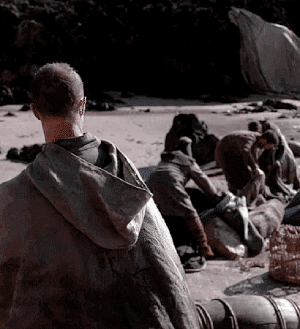


The Duchess therefore ruled Brittany, with or without a husband, from 1181 to 1201. An episode of her reign illustrates well the way in which the Duke of Brittany cooperated with the Plantagenet regime for maritime issues. It is delivered to us by a letter from the Duchess Constance addressed to Pierre Bertin, Senechal of Poitou, from around 1190. It mentions the outcome of a dispute caused by a shipwreck at Belle-Île. The Abbot of Sainte-Croix de Quimperlé contested the Right of the Wreck to a certain Geoffroi of Le Mans, "de Cenoman”, and to his associates- merchants from La Rochelle, it seems. Belle-Île being under the jurisdiction of the continental lands of Brittany, the Duchess Constance delegated the care of settling the dispute to her Senechal du Broërec. The latter ruled that the abbot had only the Right of the Wreck, by endowment from the duke, which had to be perfectly attested, thanks to the procedures and acts exchanged by the abbeys of Quimperlé and Redon earlier in the century. But Geoffrey of Le Mans did not bow to this judgment. Leaving aside the legal acts in question, Constance orders Pierre Bertin, in this letter, not to take any action against his men or those of the abbot, as she strives to satisfy both parties. How could the Duchess give orders to the Senechal de Poitou in this way? By what authority? It remains unclear. The compelling language Constance uses in this letter may be thought to be essentially emphatic and aimed at enhancing her personal prestige. But this document illustrates very well a crucial point: the importance of harmonious cooperation in this region. The Duchess of Brittany and the Senechal du Poitou, who in fact assumed the functions of viceroy, in the absence of Richard I, are proof that they could coordinate their exchanges with the merchants, to spare a solution that was unfair or arbitrary to those involved in maritime trade.
-Judith Everard, Le duché de Bretagne et la politique Plantagenêt aux XIIe et XIIIe siècles : perspective maritime
98 notes
·
View notes
Text
Liste de lecture sur les Plantagenêts.
Chose promise, chose due. Vous trouverez l'ensemble des docs historiques en français et en anglais portant sur la dynastie des Plantagenêts.
Pour information, des listes de romans en français, en anglais et des docs qui se concentrent sur les rois et les reines Plantagenêts devraient venir fin mai.
La liste est exhaustive.
Français :

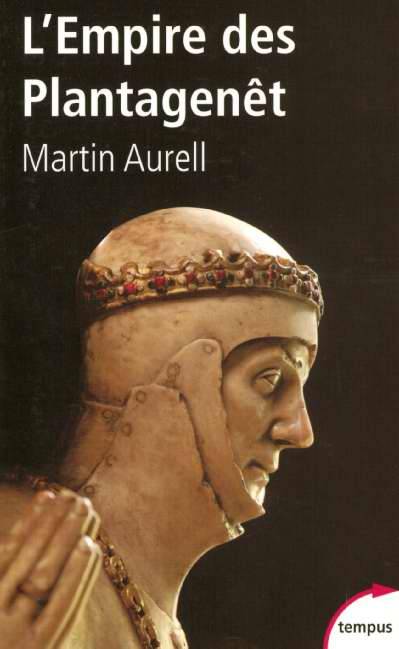
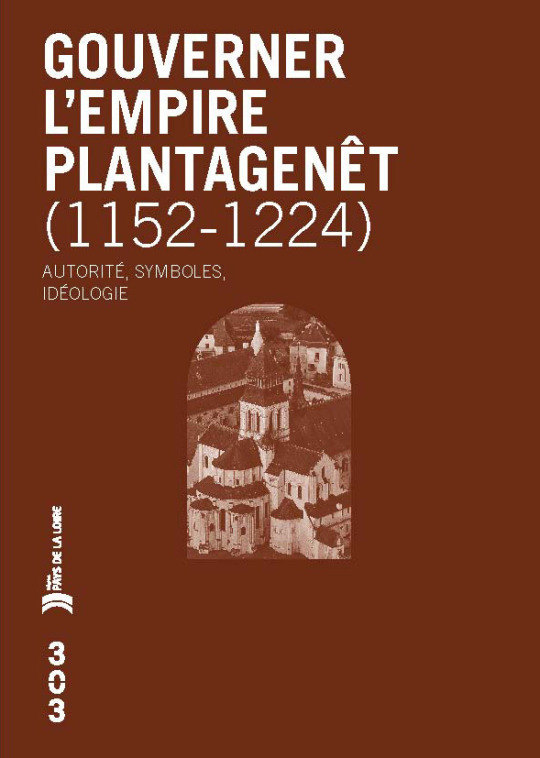
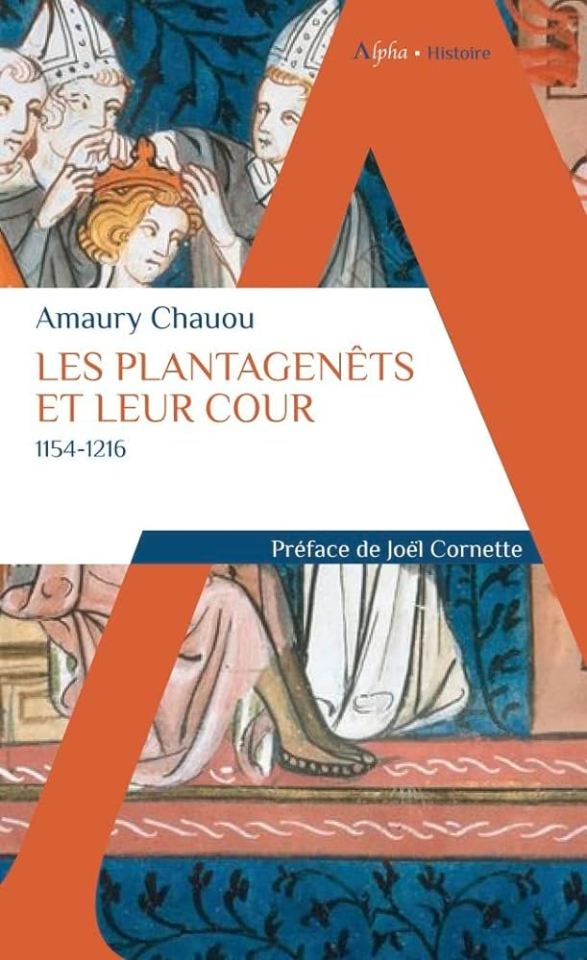




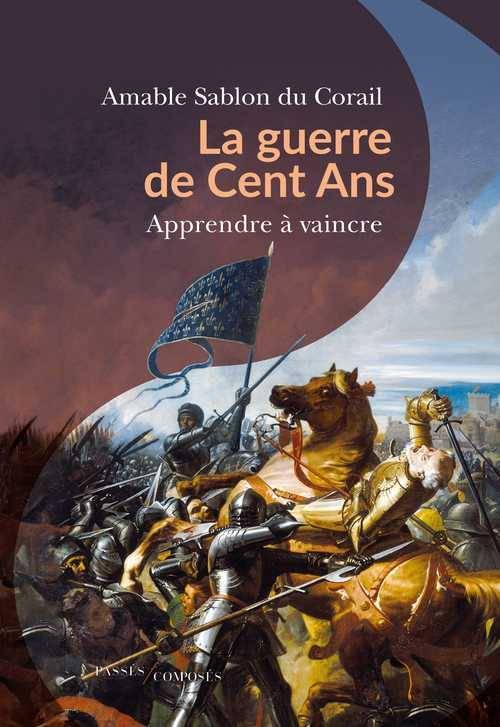
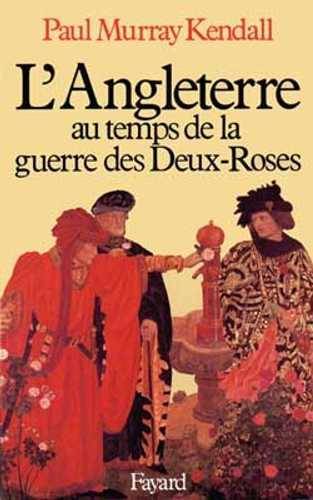

Anglais :




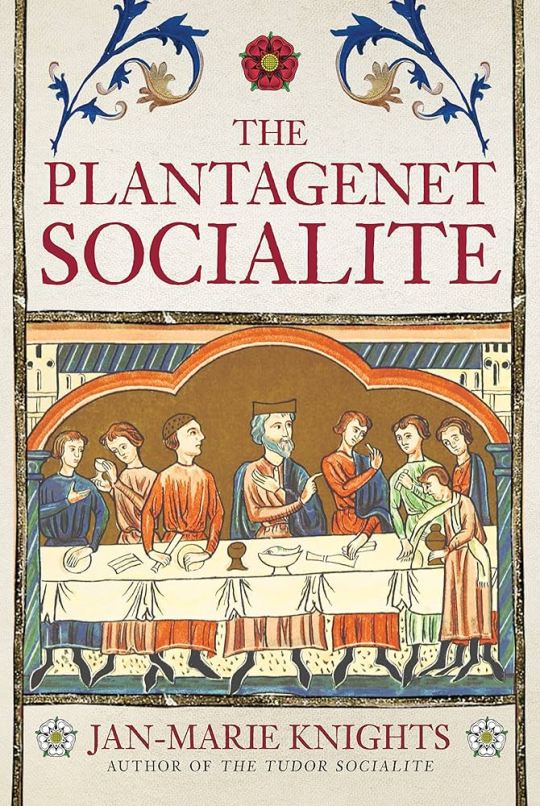
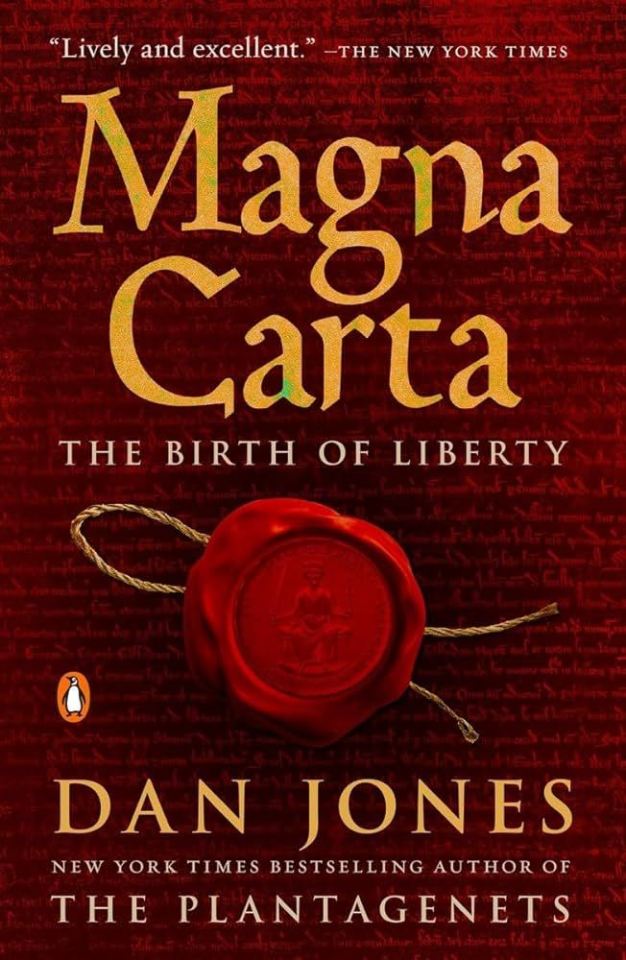





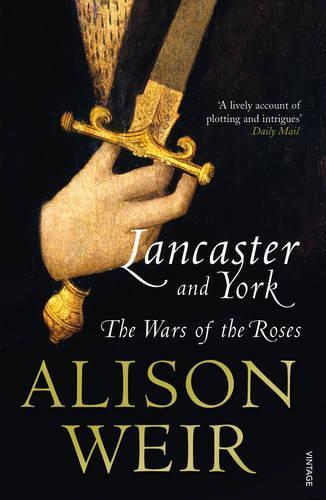
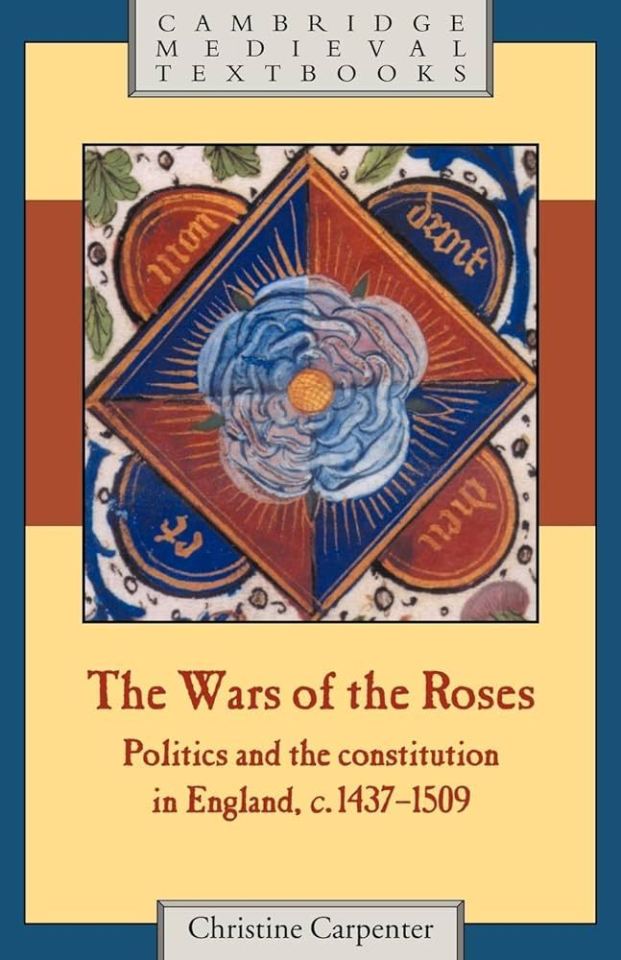
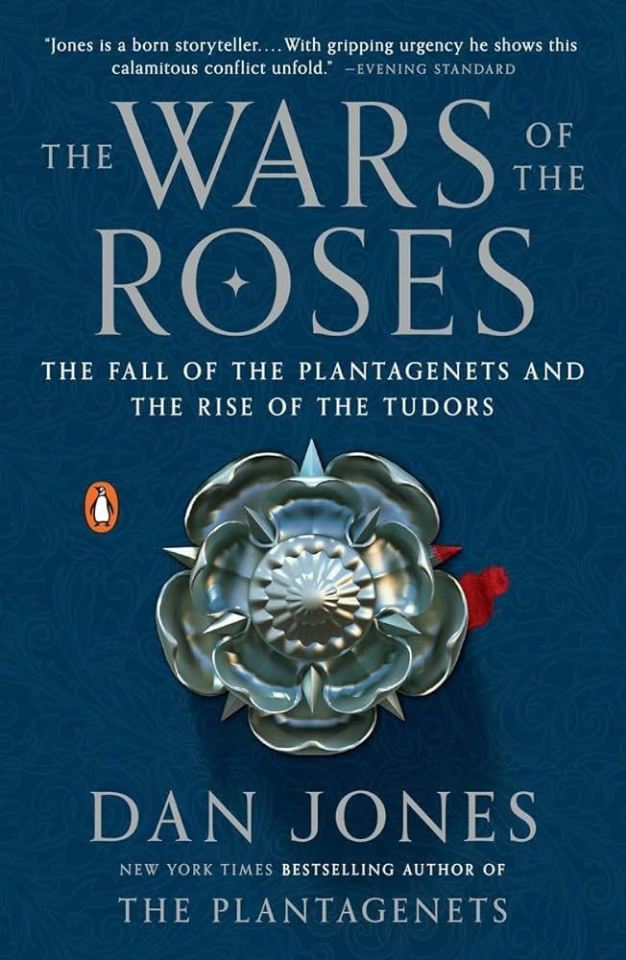

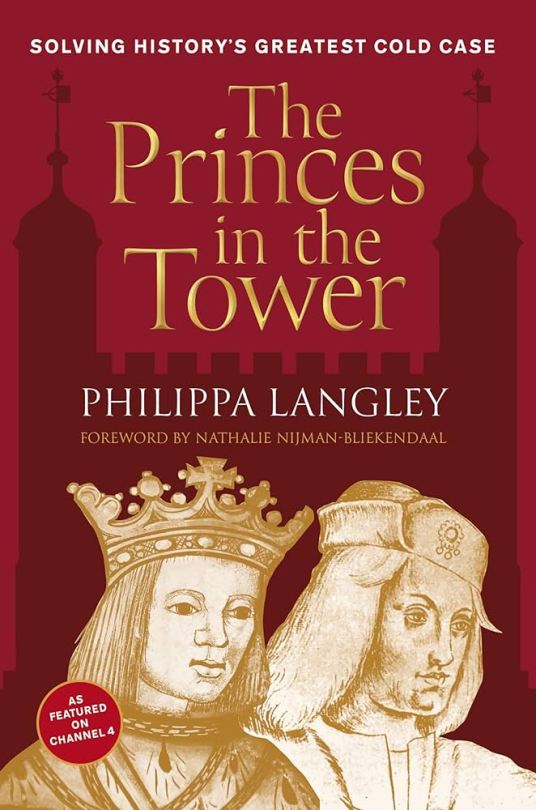

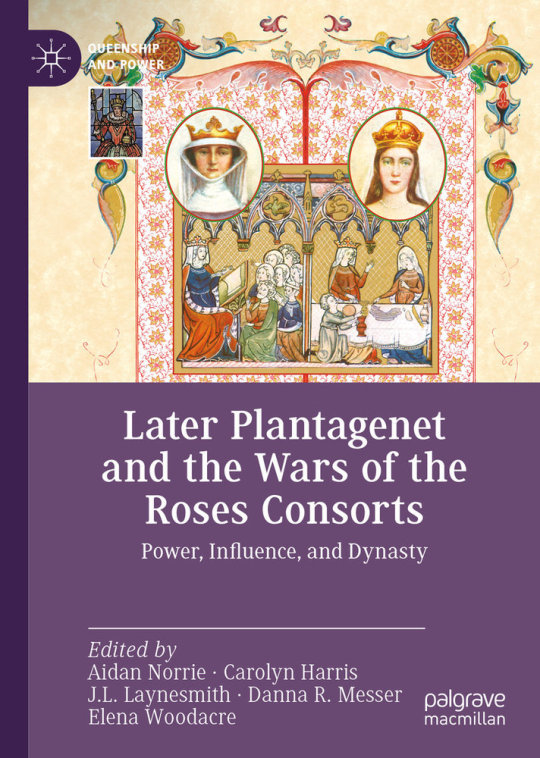
#booklr#books#plantagenet#plantagenets#eleanor of aquitaine#henry ii#henry iii#edward i#edward ii#edward iii#york#lancaster#richard the lionheart#richard iii#richard ii#john king#edward iv#history medieval#medieval history#moyen âge
1 note
·
View note
Photo
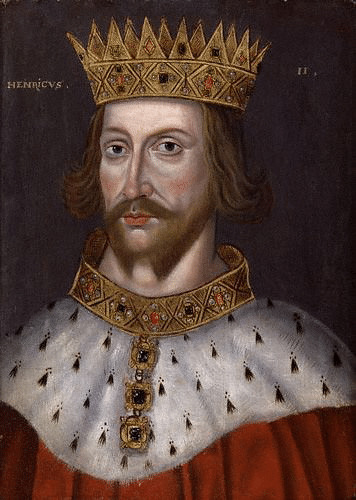
Henri II roi d'Angleterre
Henri II d'Angleterre régna de 1154 à 1189. Il accéda au trône par négociation avec son prédécesseur, le roi Étienne d'Angleterre (alias Étienne de Blois, roi d'Angleterre r. de 1135 à 1154), à la suite de la guerre civile qui avait fait rage entre ce monarque et l'impératrice Mathilde, mère d'Henri (1102-1167). Henri fonda une nouvelle dynastie, les Angevins-Plantagenêts, et régna jusqu'en 1189, formant le plus grand "empire" d'Europe occidentale et s'imposant comme l'un des plus grands rois de l'histoire de l'Angleterre. Deux points noirs sont cependant impossibles à effacer des mémoires: l'assassinat de son chancelier, puis archevêque, Thomas Becket en 1170 et les rébellions menées par ses propres fils à la fin de son règne. Son fils Richard Ier d'Angleterre, dit Richard Cœur de Lion (r. de 1189 à 1199), puis son autre fils Jean d'Angleterre (alias Jean Sans Terre r. de 1199 à 1216) lui succédèrent.
Lire la suite...
0 notes
Text

Coup de force.
2 juin 1216 : les Capétiens prennent le contrôle de l’Angleterre.
Depuis la bataille d’Hastings de 1066, des rois originaires du Regnum Francorum (Royaume des Francs) se succèdent sur le trône d’Angleterre.
Depuis cent cinquante ans, c’est toute la haute société anglaise qui s’en trouvent profondément remaniée.
Suite à la victoire de Guillaume le conquérant, l’élite saxonne est remplacée par les seigneurs originaires du Royaume des Francs et particulièrement de Normandie, de Bretagne, des Flandres.
Après près de cent ans de domination sans partage en Angleterre, la maison de Normandie cède le pas face à une nouvelle dynastie de rois.
Ces derniers sont toujours originaires de France : il s’agit des Plantagenêt, originaires du Maine-Anjou.
Plus ambitieux que la maison de Normandie, les Plantagenêt entendent constituer un véritable empire à cheval entre les îles britanniques et le continent.
La dynastie angevine entre alors en conflit direct avec les Capétiens, dépositaires de la couronne de France depuis près de deux cents ans.
Cherchant à déstabiliser les Plantagenêt, les Capétiens projettent plusieurs invasions de l’île.
Philippe Auguste coordonne une première tentative en 1213 depuis le comté de Flandres.
Dans l’estuaire de la Zwim, il réunit une énorme flotte d’invasion composée de 1 700 navires.
L’armada est tellement importante que le port flamand de Damme ne peut pas tous les accueillir.
Près de 400 navires français jettent alors l’ancre au large, leur équipage pose le pied à terre pour piller l’arrière-pays.
Guillaume de Longue-Epée est dépêché sur place pour le compte de Jean d’Angleterre.
Avec une flotte de 500 navires et 700 chevaliers, il s’empare des 400 navires français restés en large de Damme le 30 mai 1213.
Guillaume de Longue-Epée est toutefois contraint de se replier vers Angleterre le lendemain, lorsque la flotte française restée dans le port de Damme engage le combat.
La bataille de Damme de 1213 réduisant le contingent de navires français disponible, Philippe Auguste temporise son projet d’invasion de l’Angleterre.
Après avoir humilié les hommes de Jean d’Angleterre et d’Otton de Germanie à Bouvines en 1214, Philippe Auguste confie à son fils Louis (futur Louis VIII) le soin d’envahir l’Angleterre en 1215.
Ce dernier fait débarquer en éclaireur près de 400 chevaliers entre décembre 1215 et janvier 1216 en Angleterre afin de préparer l’invasion.
Après avoir retourné une partie de l’arrière-pays du comté de Kent contre Jean d’Angleterre, Louis de France débarque sur l’île de Thanet (Kent) en mai 1216.
L’île se rend aux 1 200 chevaliers français et leurs supplétifs anglais le 21 mai 1216, ouvrant la voie à l’invasion totale de l’Angleterre.
Louis de France et ses hommes parviennent à Londres le 2 juin 1216 où il se fait proclamer roi d’Angleterre sous le nom de Louis Ier, avec le soutien des grands seigneurs anglais en rupture de ban avec Jean d’Angleterre.
Les Capétiens garderont le contrôle du royaume d’Angleterre pendant près de deux ans.
Après la mort de Jean d’Angleterre le 19 octobre 1216, le régent désigné par les Plantagenêt, Guillaume le Maréchal, retourne un à un les seigneurs anglais contre les Capétiens.
Les barons finiront par se retourner contre Louis de France et le contraindront à renoncer au trône anglais à la suite des batailles de Lincoln (mai 1217) et de Sandwich (août 1217).
Si les Capétiens se retirent, la couronne d’Angleterre restera néanmoins entre les mains des Angevins pendant encore près de deux cents ans.
Illustration : Portrait de Louis VIII (1187-1226), dit le Lion, vers 1837, Henri Lehmann (1814-1882), Il est représenté tenant l'épée du sacre dite de Charlemagne. Châteaux de Versailles et de Trianon, Versailles, France.
Pour aller plus loin : Jules Viard, « Les Grandes Chroniques de France : publiées pour la Société de l'Histoire de France », Paris, Librairie ancienne Honoré Champion, 1932, en libre accès sur Gallica : https://gallica.bnf.fr/ark:/12148/bpt6k6548730j.r=.langFR
Pour une biographie récente sur Louis VIII : Flavien Dupuis, « le Lion de France, l’histoire épique du roi Louis VIII », éditions le Cerf, 2021.
807 ans de date à date, 2 juin 1216.
0 notes
